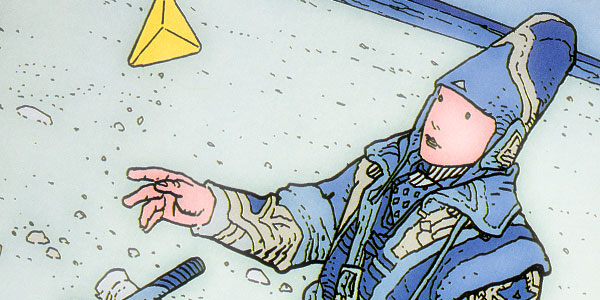
Most French comics are known as Franco-Belgian comics as they are created for a French and Belgian audience.
The Early Years: Pre-War
The 19th Century developed many european artists drawing cartoons with the occasional artist using a sequential multi-panel narration that is seen in modern day comics. Yet, this narration differed slightly in that the captions and dialogue was featured underneath the panels opposed to using balloons filled with words. The strips were also short and humorous, similar what you might find near the back of a newspaper. The most popular artists were Gustave Dore, Nadar, Christophe and Caran d’Ache. They all had their differing qualities such as Caran d’Ache specialising in comics without any words whatsoever.
Come the 20th century, the first mass marketed French comics started to arise such as Becassine and Les Pieds Nickeles. The publications of 1910 were aimed at children and kids. In 1920, the Abbot of Averbode, Belgium, commenced the publication of Zonneland, a more text based magazine with space illustrations. However, they then evolved into a more comic-based approach as time went on.
The most well known Belgian comic series would have to be ‘The Adventures of Tintin’ created by Herge. The first story was called ‘Tintin in the Land of the Soviets’ and was published in 1929 by Le Petit Vingtieme. These early stories were in fact very racist and featured many political stereotypes before progressing into a more minimalistic child-orientated style.
The Journal de Mickey began distribution in 1934 and is often believed to be the first step towards modern comic books in the Franco-Belgian community. It was a weekly 8-page publication which prominently featured a comic-book style of design and was extremely popular right off the bat. This popularity stayed consistent until the end of the 30’s with magazines publishing mainly imported stories from America.
The Later Years: Post-War
However, when Germany invaded France and Belgium, American comics were seemingly impossible to import as the Nazis would not allow it. While at the time this would of come across as a hardship, it did make room for many original French and Belgium artists and animators to create their own content. They worked off the style of American comics such as Superman and Flash Gordon to create flow and learn what worked. This is when some of the most popular Franco-Belgian artists began their trip to fame such as Andre Franquin and Peyo.
Once the war was over, both countries and developed many skilled artists and so American comics were imported far less. 1946 also brought with it the self titled Tintin magazine to great feedback. This decline in US comic popularity was helped further still by the French Communist party in 1949 when they brought a new law that excluded most American publications from being read by youths. The war did see the elimination of many French publications, though.
The 60’s saw the fall in popularity for most French Catholic magazines and the creation of adult comic magazine publications featuring pornography, violence and fantasy.
Since the 60’s French comics have become far more artistic and tend to make more use of the graphic aspect of stories. They also feature a complex storyline with the target audience being older teenagers and adults. The comic books are have become far more novel based opposed to being shortened snapshots like their ancestors, similar to that of American and UK graphic novels.


 Never miss a story from us, get weekly updates in your inbox.
Never miss a story from us, get weekly updates in your inbox.